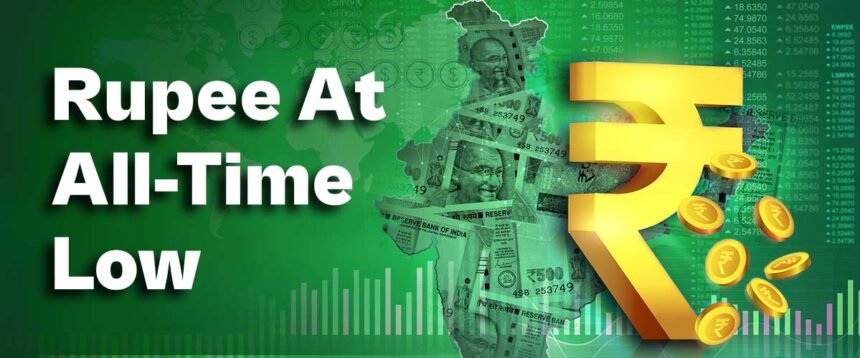The Indian rupee has depreciated by 15 paise against the US dollar to close at 82.09 on Thursday, following the strength of the American currency and rising crude oil prices in international markets. Additionally, negative sentiments in the equity markets also contributed to the decline of the local unit.
Forex traders suggest that investors are treading cautiously ahead of the announcement of inflation data on the domestic front, scheduled for Friday. This uncertainty, coupled with the support for the US currency due to easing US inflation, has triggered positive sentiments across global markets.
The rupee’s fall comes as a blow to India’s importers as it increases the cost of imported goods. However, it is beneficial for exporters who receive higher returns for their goods.
The Reserve Bank of India (RBI) has been intervening in the foreign exchange market to prevent any sharp movements in the rupee. In April, the central bank bought a net $4.44 billion of foreign exchange reserves, increasing its reserves to a record high of $592.89 billion.
Rising crude oil prices have also contributed to the rupee’s fall. India is a net importer of crude oil, and any increase in crude oil prices leads to higher import costs, adding to the country’s current account deficit.
The negative sentiments in the equity markets have also impacted the rupee’s performance. The benchmark Sensex fell 471.01 points, or 0.94%, to close at 49,216.52 on Thursday. The fall in the equity market reflects the impact of the second wave of COVID-19 in India, which has led to lockdowns and restrictions across various states.
The easing of US inflation has also contributed to the strength of the US dollar, which has added to the pressure on the rupee. The US inflation rate fell to 4.2% in April from 4.7% in March, easing concerns about the Federal Reserve’s plan to taper its bond-buying program.
The rupee’s fall against the US dollar is a result of the strong American currency, rising crude oil prices, negative sentiments in the equity markets, and cautious investor sentiments ahead of the announcement of domestic inflation data. The RBI’s interventions in the foreign exchange market and rising foreign exchange reserves provide some support to the rupee. However, the impact of rising crude oil prices and negative equity market sentiments continue to weigh on the rupee’s performance.




